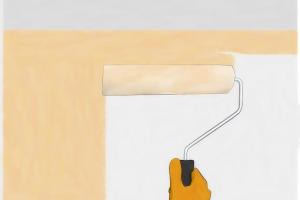Ultimate Guide to Emulsion Walls: Techniques, Tips, and Tricks for a Professional Finish

-
Quick Links:
- Introduction
- What is Emulsion Paint?
- Types of Emulsion Paint
- Tools and Materials Needed
- Preparing the Wall
- Step-by-Step Guide to Emulsion Walls
- Common Mistakes to Avoid
- Case Study: Transforming a Living Room
- Expert Insights
- FAQs
Introduction
Emulsion painting is a popular technique used in homes and offices for its versatility and ease of application. Whether you're refreshing a room or transforming your entire space, learning how to emulsion walls can save you time and money while providing a professional finish.
What is Emulsion Paint?
Emulsion paint is a water-based paint that is commonly used for interior walls and ceilings. It is known for its quick-drying properties, low odor, and ease of cleaning. Emulsion paints are available in a variety of finishes, ranging from matte to gloss.
Types of Emulsion Paint
- Matte Emulsion: Offers a non-reflective surface, great for hiding imperfections.
- Satin Emulsion: Provides a slight sheen, making it more durable and easier to clean.
- Silk Emulsion: Highly reflective, ideal for rooms that require a more sophisticated look.
- Vinyl Emulsion: Contains vinyl resin, providing extra durability and washability.
Tools and Materials Needed
Before starting your emulsion project, gather the necessary tools and materials:
- Emulsion paint
- Paint rollers and brushes
- Paint tray
- Masking tape
- Drop cloths
- Sandpaper
- Spackle or filler (for wall repairs)
- Protective gear (gloves, goggles, mask)
Preparing the Wall
Proper wall preparation is crucial for achieving a smooth finish. Follow these steps:
- Clear the area and remove any furniture.
- Clean the walls to remove dust and grime.
- Repair any cracks or holes with spackle or filler.
- Sand the wall to create a smooth surface.
- Apply a primer if necessary.
- Use masking tape to protect edges and trims.
Step-by-Step Guide to Emulsion Walls
- Mix the Paint: Stir the emulsion paint thoroughly to ensure an even color.
- Cut in Edges: Use a brush to cut in around the edges, corners, and areas that require precision.
- Use a Roller: Dip the roller into the paint tray and roll it on the wall in a W motion for even coverage.
- Apply a Second Coat: Once the first coat is dry, apply a second coat for a richer finish.
- Clean Up: Remove masking tape while the paint is still slightly wet and clean your tools immediately.
Common Mistakes to Avoid
- Skipping wall preparation.
- Using the wrong type of emulsion paint.
- Overloading the roller with paint.
- Neglecting to use primer on porous surfaces.
- Not allowing adequate drying time between coats.
Case Study: Transforming a Living Room
In a recent project, a homeowner transformed their dated living room into a modern space using emulsion paint. By selecting a satin finish in a soft grey, they were able to create an inviting atmosphere.
They followed the steps outlined above, ensuring thorough preparation and applying two coats for a brilliant finish. The results were not only aesthetically pleasing but also increased the overall value of the home.
Expert Insights
Experts recommend choosing high-quality emulsion paint for better coverage and durability. Additionally, consider the lighting in your space when selecting colors. Testing paint samples on a small section of the wall can help you visualize the final outcome before committing to a full application.
FAQs
1. How long does emulsion paint take to dry?
Emulsion paint typically dries within 1-2 hours, but it's best to wait 4-6 hours before applying a second coat.
2. Can I use emulsion paint on exterior walls?
While some emulsion paints are suitable for exteriors, it's recommended to use exterior-grade paints for better durability against the elements.
3. How do I clean emulsion paint spills?
Clean spills immediately with warm soapy water before the paint dries.
4. Is it safe to use emulsion paint indoors?
Yes, emulsion paints are low in VOCs, making them safe for indoor use.
5. Can I mix different colors of emulsion paint?
Yes, mixing colors can create a custom shade, but ensure you mix enough for the entire project to maintain consistency.
6. How many coats of emulsion paint do I need?
Generally, two coats are recommended for even coverage, especially if changing colors significantly.
7. What if I need to remove emulsion paint?
Emulsion paint can be removed with a paint stripper or by sanding, depending on the surface underneath.
8. Can I use a spray gun for emulsion paint?
Yes, spray guns can be used for emulsion paints, but make sure to thin the paint according to the manufacturer's instructions.
9. How do I store leftover emulsion paint?
Store leftover paint in a cool, dry place, tightly sealed, to extend its shelf life.
10. Can I paint over emulsion paint?
Yes, you can paint over emulsion paint with another coat of emulsion or any compatible paint type, provided the surface is clean and primed if necessary.